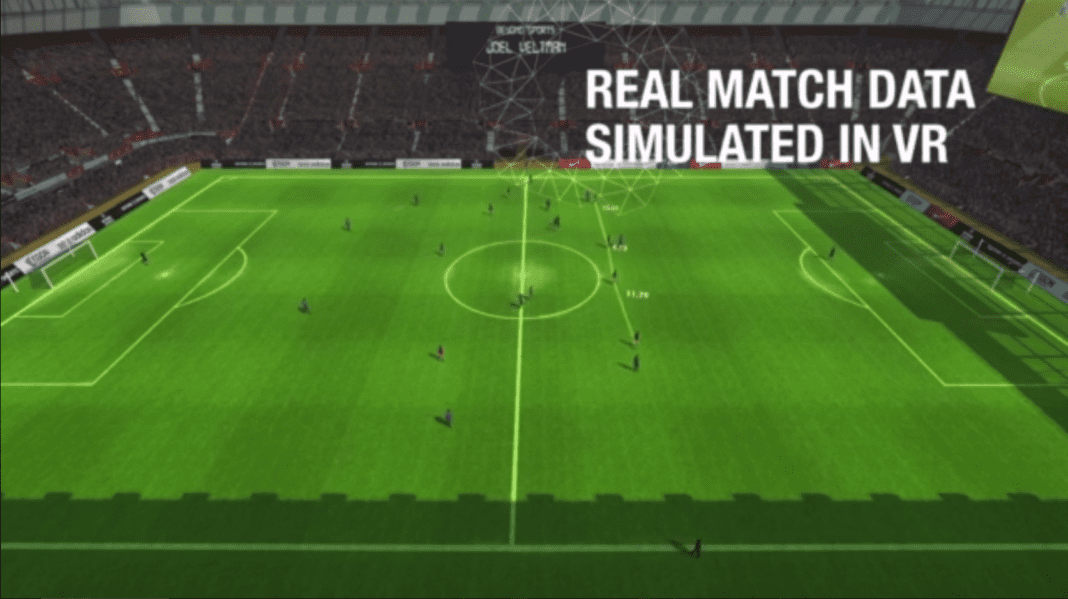While time passes, we will always find new ways to improve physical training. A dedication to personal development is one of the hallmarks of our species. But we don’t merely build on and innovate. Sometimes breakthroughs are better than what we had before. Josh Clark wrote the Couch to 5K Program in 1996 to help people run. It has had resounding success. Medhi started Stronglifts 5×5 to share his weightlifting method. The fan page attests to its effectiveness. Now, VR is training athletes.

The view from inside the STRIVR headset.
How Are We Training Athletes with VR?
STRIVR, EON Sports VR, and Beyond Sports are the big names behind this innovation. Their programs have garnered media attention, but that doesn’t mean it’s all show. STRIVR is working with sports teams like the San Francisco 49ers, the Dallas Cowboys, and the Washington Wizards. Beyond has won an award for being one of the most promising technologies this year. A quarterback coach working with EON have expressed how seventh-graders who are using VR are “seeing the field like a senior in high school.”
EON’s CANESVR doesn’t forget about the people who just enjoy watching sports, either.
But How is The Technology Improving Performance?
While real-life practice is limited by the endurance of athletes and the hours in the day, VR is constricted by neither. STRIVR allows players to watch and re-watch reps as many times as they want to, even after their muscles are fatigued. They can do this without being anywhere physically close to their coach or their teammates. It really brings new perspective to the phrase ‘homework.’
A player using a VR headset also gains the benefit of experiencing the game from the best possible point of view. Recorded videos of games offers a great overhead look, but athletes don’t belong on the sidelines. They should be in the game. Imagine any sports video game. A gamer needs to see the entire field because they control the entire team. On the other hand, an individual player only has their eyes to go by. Virtual reality takes a player where they will be during those high-pressure situations in a low-pressure setting.
Another point to consider is that of money. Training athletes with VR is cost-efficient. No one can say if VR can supplant training camps right now, but it is an alternative and a supplement. Going beyond professional sports teams, there are schools using VR technology. Don’t forget the seventh-grader up there. Well, any school will tell you how under-budgeted they are. If VR would allow kids to play and enjoy the sports they like, while being financially-viable for the school, then all the more reason to invest.






